The statue of the “Delphic Charioteer” – Inichos (Ηνίοχος) was found on April 22, 1896 by French archaeologists during excavations in the Delphic Sanctuary of Apollo, and was subsequently transferred to the Delphic Archaeological Museum.
The statue was created in 478-474 BC. e., erected at Delphi in 474 BC. e. to commemorate the victory of the chariot team at the Pythian Games in 478 BC. e. The inscription on the limestone base of the sculpture says that it was erected by order of Polyzelus, the tyrant of Gela, a Greek colony in Sicily, as a gift to Apollo, which allowed him to win the race. The dedication reads: “[Νικάσας ἵπποισι Π]ολύζαλός μ'ἀνέθηκ[εν] / ὑιος Δεινομένεος, τ]όν ἄεξ', εὐόνυμ' Ἄπολλ[ον]”(from ancient Greek – “Polisalos dedicated me, be favorable to him, noble Apollo”).
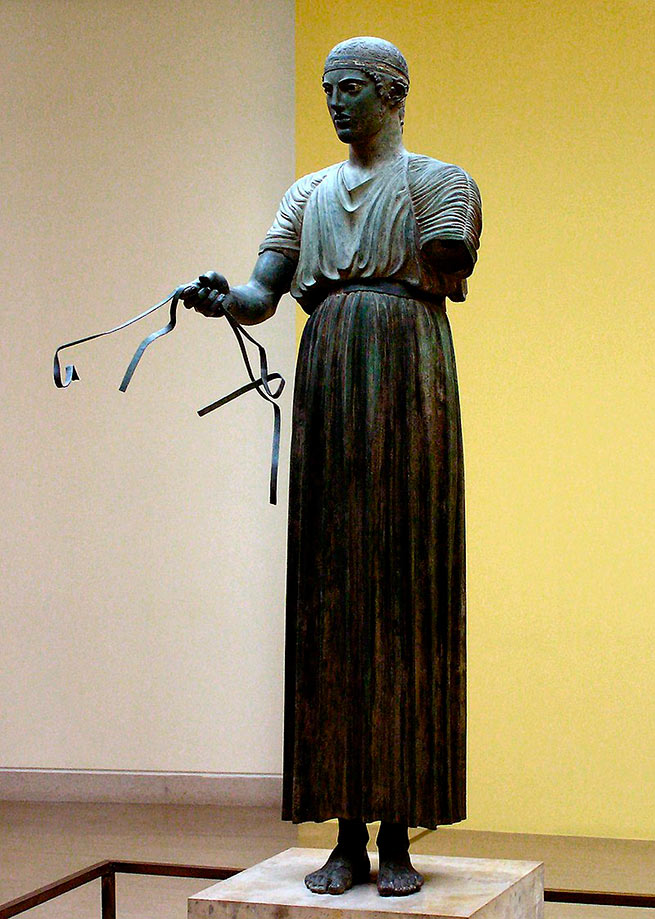
The Sicilian colonies, where the donor came from, were comparable in wealth to the policies of the metropolis, and their rulers could easily afford the most magnificent offerings to the gods, as well as the best horses and charioteers. However, it is doubtful that this statue came from Sicily. The name of the sculptor who created it has not survived (presumably Sotades), but stylistic analysis suggests that it was cast in Athens. In addition, there is an obvious similarity with the details of the “Apollo of Piraeus”, whose Attic origin is reliably known.
Inichos is the most famous exhibit at Delphi and has featured prominently since its discovery. For obvious reasons, it was removed from Delphi only during the occupation.
Life-size sculpture in bronze depicting a charioteer
The person depicted is a very young man, a youth. Chariot drivers were chosen to be light weight, but in addition they had to be tall, so teenagers were often hired for this job. He is dressed in a type of chiton called xystis, the attire worn by charioteers during competitions. It reaches almost to the ankles and is belted with a simple belt. Two straps crossed on the back protected the xistis from being blown up by the wind during racing.
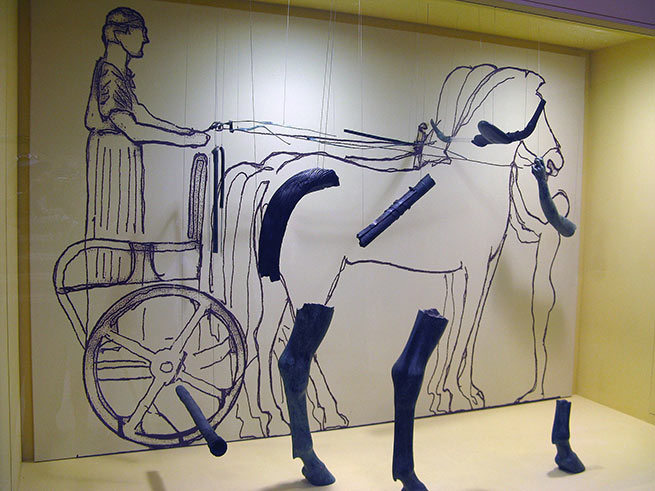
Stylistically, the Charioteer belongs to the early classical period: it is more naturalistic than the archaic kouros, but the pose still remains frozen, compared to classical statues of later times. Another legacy of the archaic is that the head is slightly tilted to one side. The facial features are given some asymmetry for the purpose of greater realism.
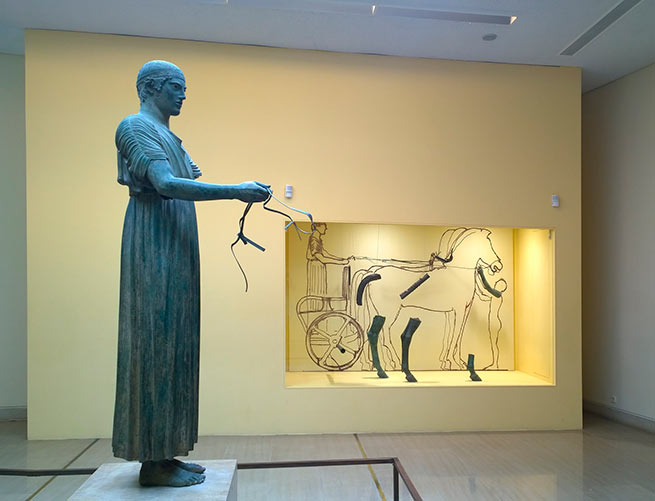
The naturalistic interpretation of his feet in ancient times aroused admiration
The Charioteer was originally part of a large sculptural group installed at Delphi, which included a chariot, a quadriga of horses (or six horses) and two grooms. Several fragments of horses, chariots and the hand of a servant boy were discovered next to the statue. In its original condition, it was probably one of the most impressive statues of its time.
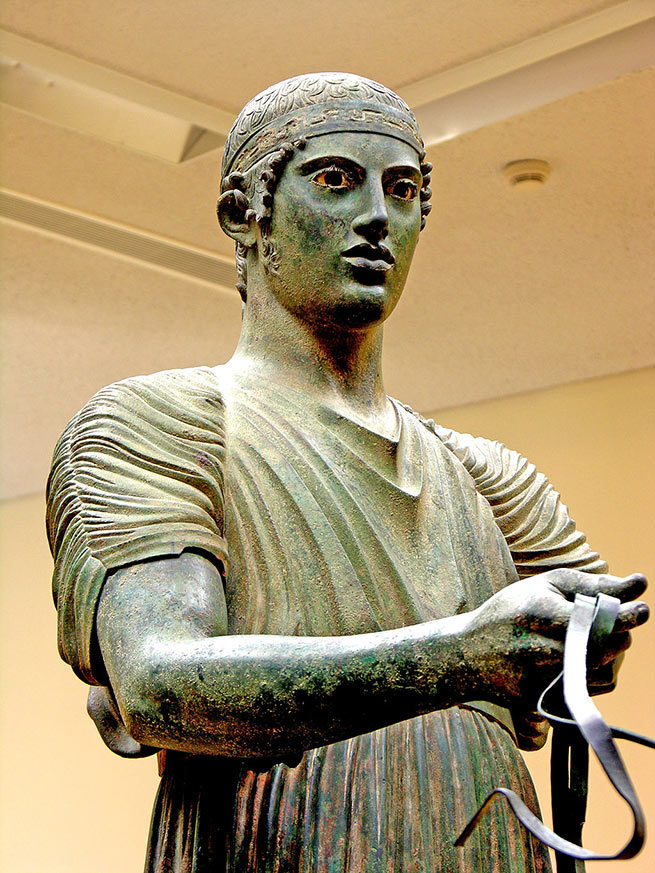
The Charioteer is in excellent condition, with the exception of the missing left hand. Greek bronze sculptures were cast in parts and then put together. At the time of discovery, this statue was divided into three parts: the head with the upper torso, the lower torso and the right arm. It is likely that the other limb was separated and lost before the statue was buried – this was probably done to protect the sculpture from looters shortly after the Delphic sanctuary was closed in the 4th century. n. e. It is also likely that the entire sculpture group was hidden in the ground, but the horses may have disappeared during the earthquake in 373 BC. e.
According to another point of view, Inichos was buried after a strong earthquake that occurred in 373 BC in Delphi. The falling stones buried him underground, where he remained for many centuries.
Regardless of the reasons, this protected the statue from robbery and raids. On April 16, 1896, French archaeologists, as part of the “Great Excavations” launched by the French School of Athens in 1892, began excavating the Delphic Oracle. Then they discovered a large statue that was in excellent condition.
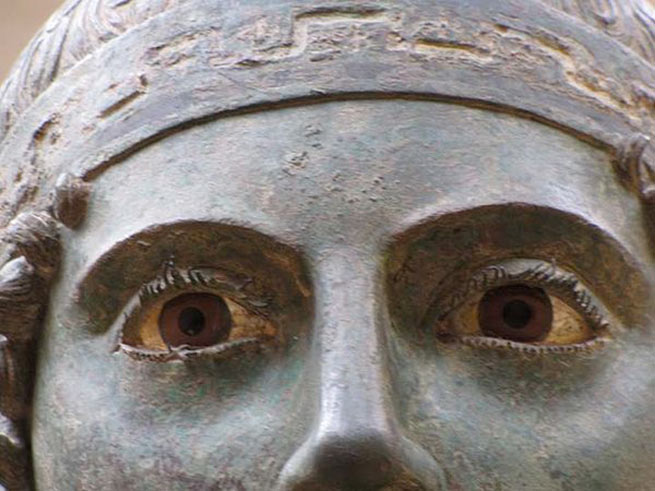
Technique
The statue is one of the few Greek bronze sculptures that retains the inlay of the eyes with onyx and the detailing of the eyelashes and lips with copper. The headband is made of silver and may have been decorated with precious stones that were recovered.
The “Delphic Charioteer” has been depicted several times on Greek postage stamps, as well as on the Greek 10,000 drachma banknote of 1947. On April 7, 2021, the replica of the “Delphic Charioteer”, donated by Greece to the people of Qatar as a sign of strengthening cultural ties between the two countries, was unveiled by the Minister of Culture and Sports of Greece, Lina Mendoni, at the Doha Metro Station, Hamad International Airport in Qatar.



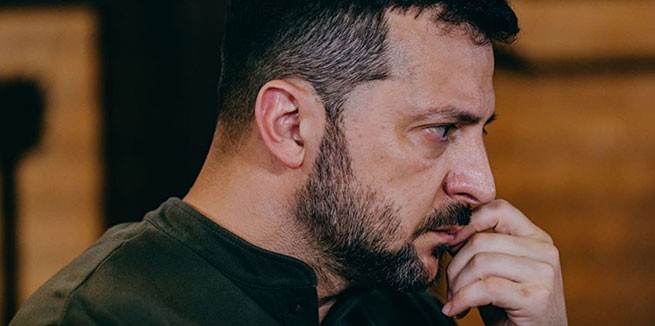
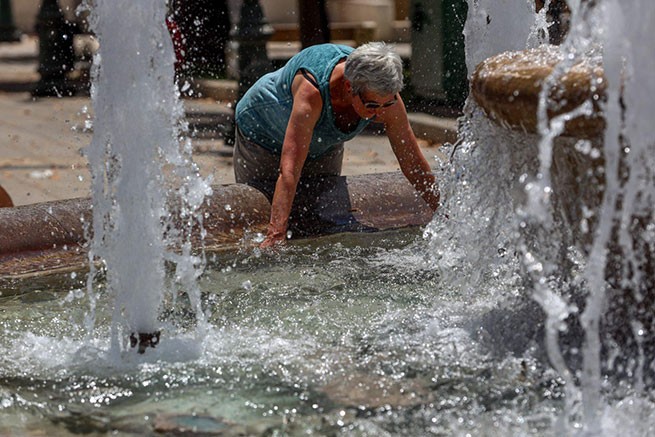
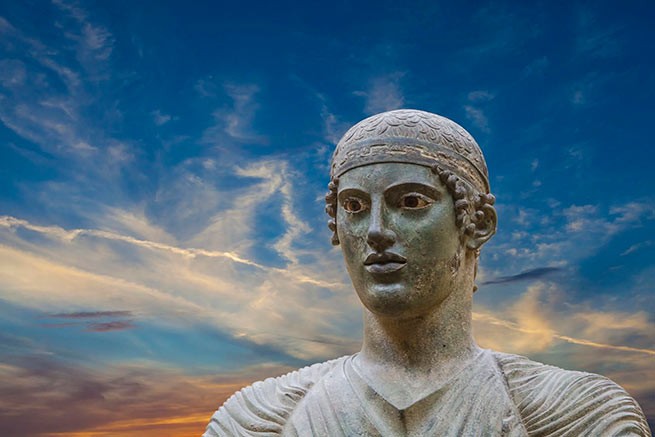

More Stories
Six Greek high school students win medals at International Mathematical Olympiad
Olympic Games: Greek Delegation Athletes Head to Paris
Big "police purge" on Athos